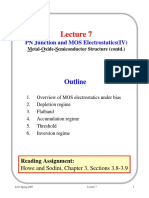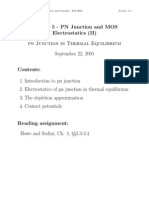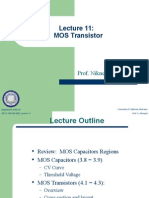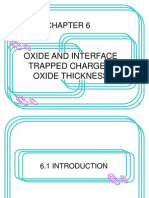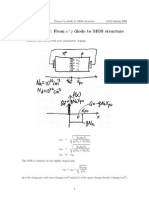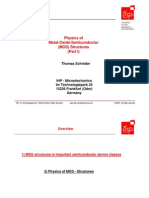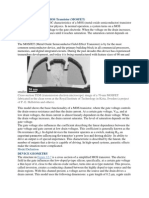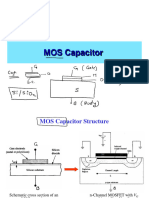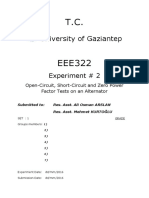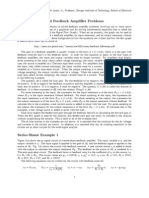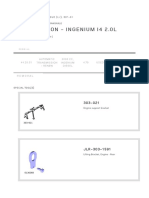0% found this document useful (0 votes)
98 views18 pagesLecture 7 - PN Junction and MOS Electrostatics (IV)
The document discusses the electrostatics of a metal-oxide-semiconductor (MOS) structure. It begins by introducing the key components of an MOS structure and noting its importance in electronics. It then summarizes:
1) At zero bias, carrier transfer between the metal and semiconductor results in a space-charge region near the interface with a built-in potential.
2) The electric field and electrostatic potential can be derived from the space charge density and vary with position.
3) One more equation is needed to solve for the depletion width, relating the potential drop across the structure to the built-in potential.
Uploaded by
Yavuz KaplanCopyright
© © All Rights Reserved
We take content rights seriously. If you suspect this is your content, claim it here.
Available Formats
Download as PDF, TXT or read online on Scribd
0% found this document useful (0 votes)
98 views18 pagesLecture 7 - PN Junction and MOS Electrostatics (IV)
The document discusses the electrostatics of a metal-oxide-semiconductor (MOS) structure. It begins by introducing the key components of an MOS structure and noting its importance in electronics. It then summarizes:
1) At zero bias, carrier transfer between the metal and semiconductor results in a space-charge region near the interface with a built-in potential.
2) The electric field and electrostatic potential can be derived from the space charge density and vary with position.
3) One more equation is needed to solve for the depletion width, relating the potential drop across the structure to the built-in potential.
Uploaded by
Yavuz KaplanCopyright
© © All Rights Reserved
We take content rights seriously. If you suspect this is your content, claim it here.
Available Formats
Download as PDF, TXT or read online on Scribd
/ 18

